Name Fletcher Martin | Books Fletcher Martin | |
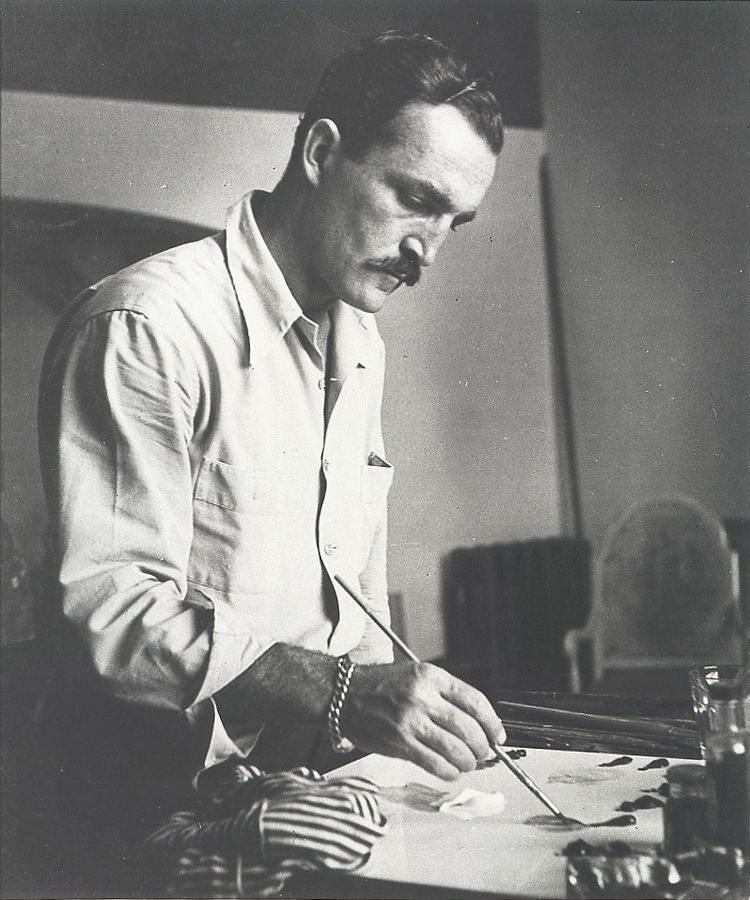 | ||
Died May 30, 1979, Guanajuato, Mexico | ||
Saving regionalist art fletcher martin 1939 hilbert museum art restoration
Fletcher Martin (April 19, 1904 – May 30, 1979), was an American painter, illustrator, muralist and educator. He is best known for his images of soldier life during World War II and his sometimes brutal images of boxing and other sports.
Contents
- Saving regionalist art fletcher martin 1939 hilbert museum art restoration
- Wpa mural in post office saved from demolition art conservation of fletcher martin mural
- Early life
- Career
- Personal life
- Paintings
- Murals
- Drawings
- Sculpture
- Book illustrations
- References
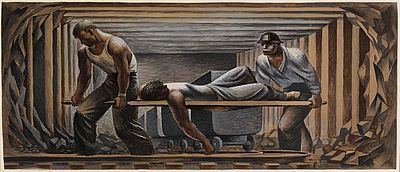
Wpa mural in post office saved from demolition art conservation of fletcher martin mural
Early life

He was born in 1904 in Palisade, Colorado, one of seven children of newspaperman Clinton Martin and his wife Josephine. The family relocated to Idaho and later Washington. By the age of twelve he was working as a printer. He dropped out of high school and held odd jobs such as lumberjack and professional boxer. He served in the U.S. Navy, 1922-26. His artistic skills were largely self-taught.
Career
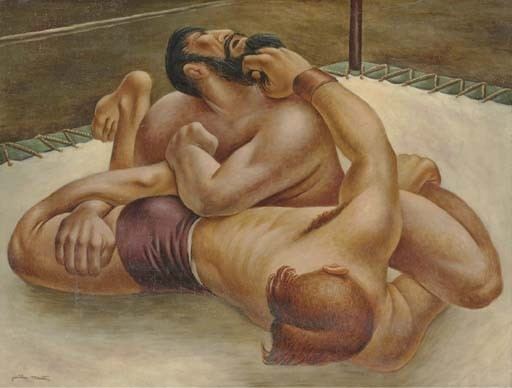
He worked as a printer in Los Angeles in the late 1920s, and as an assistant to Mexican muralist David Alfaro Siqueiros in the early 1930s. He taught at local art schools such as Otis Art Institute.
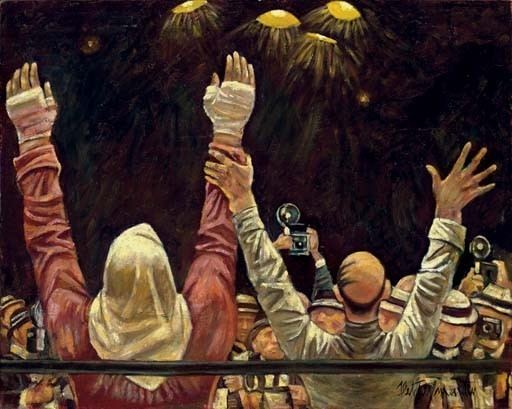
He won commissions to paint murals for the New Deal's Section of Painting and Sculpture, including Mail Transportation (1938), painted for the San Pedro Federal Building and Post Office in Los Angeles. Under the WPA he painted a mural study for the Kellogg, Idaho post office titled Mine Rescue (1939). Local industrialists objected that it depicted the dangers of mining, while officials of the Mine & Smelt Workers Union praised it. The industrialists prevailed and Martin painted an uncontroversial mural, Discovery (1941), depicting the prospector who founded the town. The rejected mural study is now in the Smithsonian American Art Museum. Perhaps his most ambitious mural, also done under the WPA, was painted for North Hollywood High School in Los Angeles. Legends of Fernandino and Gabrileno Indians (1937) depicts overlapping scenes of Native American life and ritual, and the world being carried on the backs of giants.
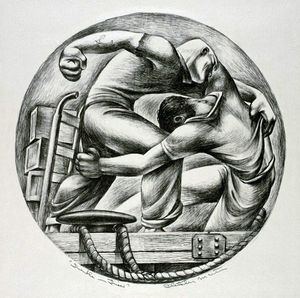
As an artist-correspondent for Life Magazine during World War II, he made hundreds of sketches of U.S. soldier life. Fourteen of his paintings from the North African campaign were published in the December 27, 1943 issue of Life, and brought him national recognition. Among these was Boy Picking Flowers, Tunisia, depicting a young GI finding a distraction from war. He also made illustrations of wartime London and the June 1944 Normandy Invasion.

His paintings often depicted men in conflict. Trouble in Frisco (1938, Museum of Modern Art) shows a brawl between longshoremen witnessed through a ship's porthole. The Undefeated (1948-49, St. Petersburg Museum of Fine Arts) depicts the 11th round of the June 25, 1948 World heavyweight boxing championship. The title is ironic: its subject is a severely battered Jersey Joe Walcott, collapsed against the referee and about to lose to (an unseen) Joe Louis. In 1954 he painted a series of illustrations for Sports Illustrated of heavyweight champion Rocky Marciano defending his title against Ezzard Charles.

Many of his most popular works were reproduced as woodcuts, lithographs or silkscreens. After the war he taught at the Art Students League Summer School in Woodstock, New York, settled in the town, and began raising a family. He experimented with abstractionism and began painting naïve images of women and children.
During his career he was a visiting instructor or artist-in-residence at the University of Florida, State University of Iowa, the University of Minnesota, San Antonio Art Institute, and Washington State University. He received prizes from the Los Angeles County Museum of Art in 1935 (for Rural Family) and 1939 (for A Lad from the Fleet); the 1947 Lippincott Prize from the Pennsylvania Academy of the Fine Arts (for Dancer Dressing); and the 1949 Altman Prize from the National Academy of Design (for Cherry Twice). He was elected an associate of the National Academy of Design in 1969, and a full academician in 1974.
Personal life
Martin married five times; four marriages ended in divorce. His wives were: first, poet Cecile Boot (married November 1925, divorced ?); second, script writer Henriette Lichtenstein (married 1935, divorced 1941); third, nurse Maxine Ferris (married 1941, divorced 1945); fourth, actress Helen Donovan (married February 1946, with whom he had sons Donovan, Clinton and Robin, divorced 1961); fifth, novelist Jean Sigsbee Small (married 1962). He had a much-publicized relationship with movie star Sylvia Sidney, and painted two portraits of her. He and Small retired to Guanajuato, Mexico in 1967, where they lived until his death in 1979.
